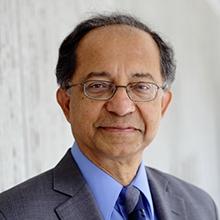You are here
Reviving India’s economy
Oct 01,2017 - Last updated at Oct 01,2017
Not long ago, India was a poster child for political stability and economic growth among emerging economies. Though the country had a long way to go to eradicate poverty and extreme inequality, when it came to steady GDP growth, it was among the world’s strongest and most consistent performers.
Not anymore.
In the second quarter of 2017, India’s growth rate fell to 5.7 per cent. It is now tied with Pakistan — behind China, Malaysia and the Philippines — on the list of major economies for which The Economist provides basic economic data.
Neighbouring Bangladesh, which is not on that list, is now growing at over 7 per cent per annum (and Bangladesh’s per capita income now exceeds Pakistan’s).
Given the Indian economy’s massive size and extensive global linkages, its growth slowdown is a source of serious concern not just domestically, but around the world. But it is not too late for India to reverse the trend.
The key will be carefully crafted policies that address both short- and long-term challenges.
In the short term, policymakers must address declining demand for Indian products, both among domestic consumers and in export markets.
All signs point to falling consumer and business spending in India. In fact, India’s index of industrial production grew by a meagre 1.2 per cent in July, compared to 4.5 per cent a year earlier. Output of consumer durables fell by 1.3 per cent; a year earlier, it grew by 0.2 per cent.
Meanwhile, annual export growth has fallen in recent years to just 3 per cent, compared to 17.8 per cent in 2003-2008, India’s rapid-growth phase. This is partly a result of a stronger rupee, which has raised the price of Indian goods in foreign markets. And, indeed, imports have risen sharply as well, as the rupee’s appreciation lowers the relative price of foreign goods: in the first half of this year, nominal merchandise imports grew by 28 per cent.
But there is another potential driver of the sharp rise in imports: people may be over-invoicing, in order to shift money abroad. This could indicate that big traders expect a correction in the rupee’s exchange rate, at which point they plan to sell the dollars that they are now accumulating for a larger sum of rupees.
This possibility should worry the Indian authorities — and spur them into action. To boost domestic demand in the short term, India needs Keynesian interventionist policies. To mitigate the rupee’s appreciation, thereby boosting external demand, the Reserve Bank of India (RBI) — one of India’s most respected institutions, populated by qualified professionals — must be given greater policy space and autonomy.
My advice would be for the RBI to lower interest rates further, thereby aligning India’s monetary policy more closely with that of the world’s other major economies.
While the current tendency towards very low interest rates is not ideal from a global perspective, the fact is that as long as India remains an outlier, it will encourage the so-called carry trade, which artificially drives up the rupee’s value.
The bigger challenge facing India will be to nurture and sustain rapid growth in the long run. To figure out how to achieve that, it is worth considering the efforts of another major emerging economy: China.
As part of its industrial policy, China’s government has identified specific economic sectors to boost. India can adopt a similar approach, with health and education being two particularly promising sectors.
Despite its success, India’s medical tourism industry still has plenty of untapped potential — not least because healthcare costs are rising around the world.
The income earned from such tourism could help the country to shore up its own health system, ensuring that all Indians — including the poor and especially children, among whom malnourishment remains rampant — have access to quality healthcare.
Likewise, India can become a hub for higher education. For the government, the imperative is to create more regulatory space and provide a facilitating ethos for the private sector. An education boom would bring huge returns for the entire Indian economy.
The final piece of India’s long-term growth puzzle is investment more broadly. The experience of East Asian countries, not to mention economic theory, shows that capital investment is among the most effective drivers of sustained economic growth. Even in India, the sharp uptick in growth from 2003 occurred alongside a surge in overall investment.
Yet India’s investment-to-GDP ratio is now slipping, from over 35 per cent in the last eight years to below 30 per cent today.
This can be explained partly by an increase in risk aversion among banks, which are concerned about non-performing assets. Falling business confidence may also be a factor.
If India implements policies that boost short-term growth, while laying the groundwork for long-term performance, confidence should rise naturally. Once investment picks up, India will be able to recapture its past rapid growth — and sustain it in the coming years. That outcome would benefit not just India, but the entire global economy.
The writer, a former chief economist of the World Bank, is professor of economics at Cornell University. ©Project Syndicate, 2017. www.project-syndicate.org












